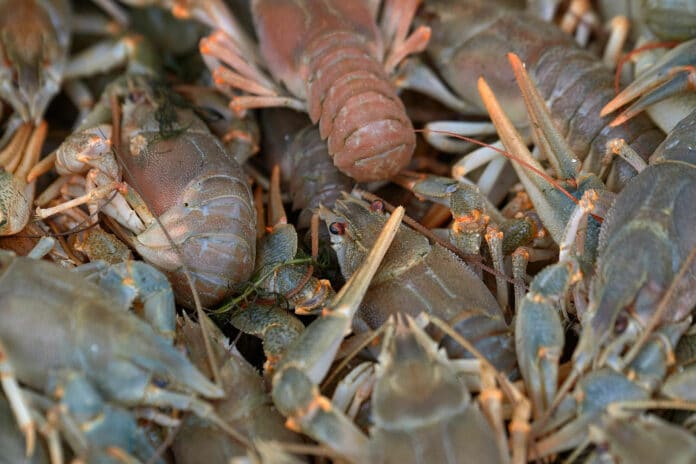This study explores how consuming dietary fiber from unconventional sources, such as crustaceans, insects, and mushrooms, can positively impact digestion.
Who can erase the memorable scenes on ‘Survivor’ when contestants courageously consumed unappealing insects and other challenging foods to win $1 million? As they faced daring culinary challenges, the contestants displayed gastronomic bravery, leaving viewers squirming.
Eating a crunchy critter begins with grinding its hard exoskeleton. Surprisingly, this rigid outer shell might be good for your metabolism, as shown in a recent study with mice from the Washington University in School of Medicine in St. Louis. The researchers, led by Dr. Steven Van Dyken, discovered that digesting chitin, a type of fiber found in insect exoskeletons, mushrooms, and crustacean shells, activates the immune system. This immune response was connected to less weight gain, lower body fat, and resistance to Obesity in mice.
Van Dyken said, “Obesity is an epidemic. “What we put into our bodies profoundly affects our physiology and how we metabolize food. We’re investigating ways to counteract Obesity based on what we learn about how the immune system is engaged by diet.”
The immune system protects us from threats like bacteria, viruses, and allergens. Surprisingly, a part of the immune system also helps digest chitin, a tough substance found in insects, mushrooms, and crustaceans. When we eat chitin, our stomach stretches, triggering an immune response. This response tells our stomach cells to make enzymes called chitinases, which break down chitin. Chitin is hard to dissolve, so our body needs these enzymes and acidic conditions to digest it.
Dr. Do-Hyun Kim did experiments with mice with no intestinal bacteria, and he found that chitin can activate the immune response even when bacteria are not present.
Van Dyken said, “Chitin digestion mainly relies on the host’s chitinases. The stomach cells change their enzymatic output through a process we refer to as adaptation. But, surprisingly, this process is happening without microbial input because bacteria in the gastrointestinal tract are also sources of chitinases that degrade chitin.”
Van Dyken observed that eating chitin-rich food in mice with gut bacteria changed the types of bacteria in the lower digestive system. This suggests that our gut bacteria can adjust to chitin-containing foods after the food has moved out of the stomach.
In the study, researchers discovered that the most significant impact on preventing Obesity in mice occurred when chitin activated the immune system but wasn’t digested. Mice on a high-fat diet were also given chitin. Some mice couldn’t produce chitinases, enzymes needed to break down chitin. These mice ate chitin but couldn’t break it down, gained the least weight, had the lowest body fat, and resisted Obesity compared to mice who didn’t eat chitin or could break it down.
Even if mice could break down chitin, they still had metabolic benefits. However, they compensated by producing more chitinases to get nutrients from it.
The researchers plan to investigate these findings in humans to see if adding chitin to diets can help control Obesity. They believe combining methods to inhibit stomach chitinases with chitin-containing foods could offer significant metabolic benefits.
In conclusion, dietary fiber from crustaceans, insects, and mushrooms can be valuable to a well-balanced diet. It has been shown to promote digestion and may offer a new avenue for enhancing overall digestive health.
Journal Reference:
- Do-Hyun Kim, Yilin Wang et al., A type 2 immune circuit in the stomach controls mammalian adaptation to dietary chitin. Science. DOI: 10.1126/science.add5649.
